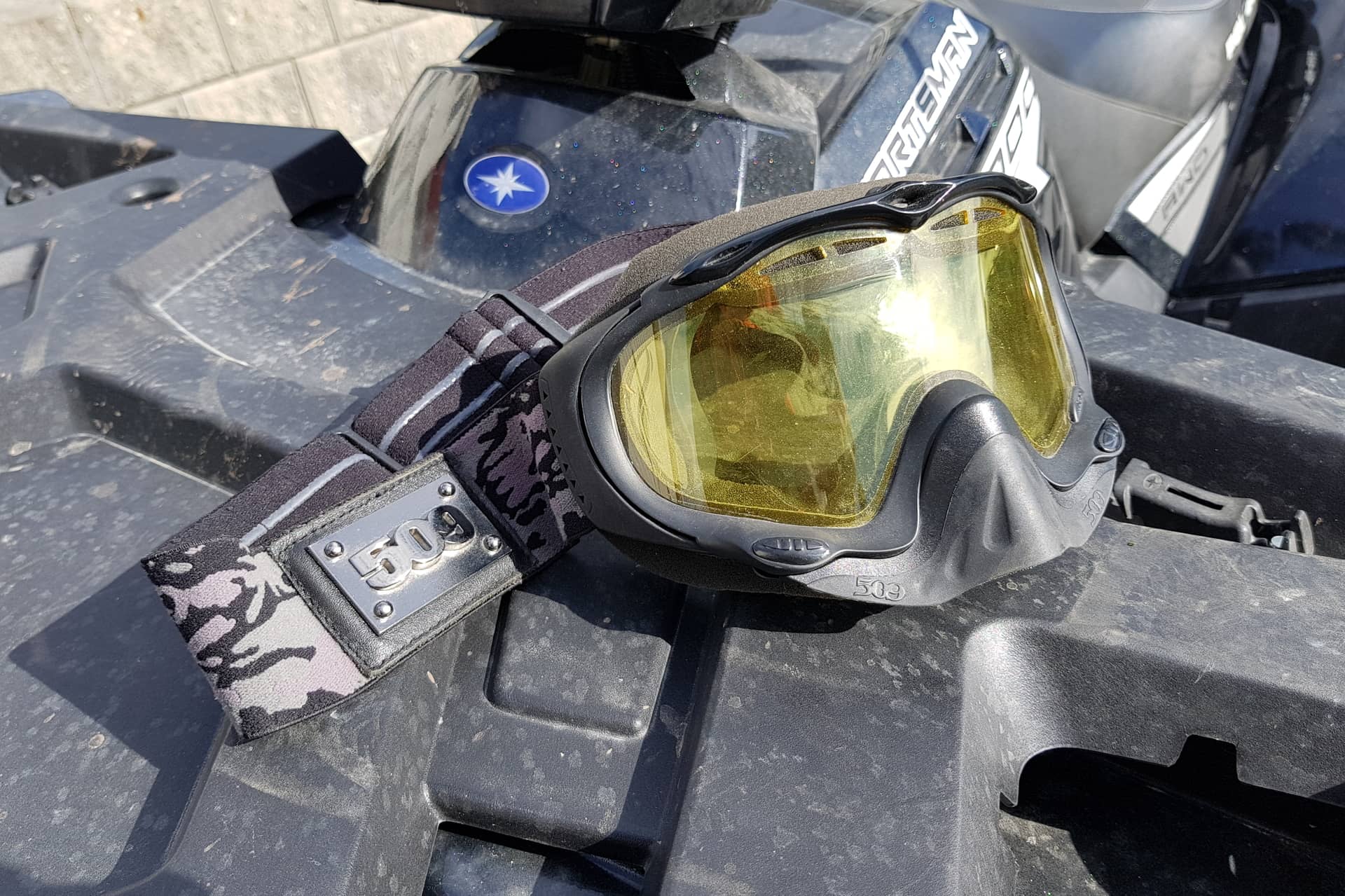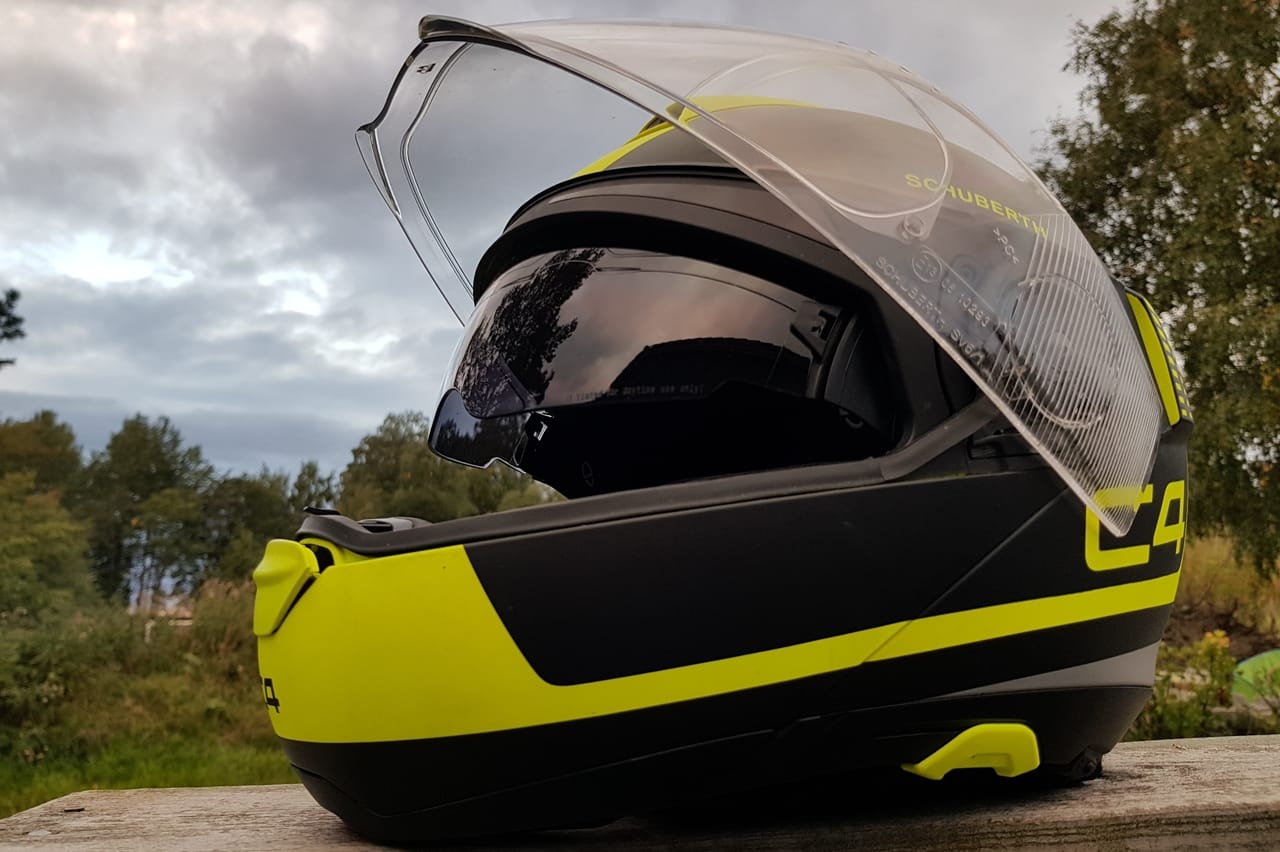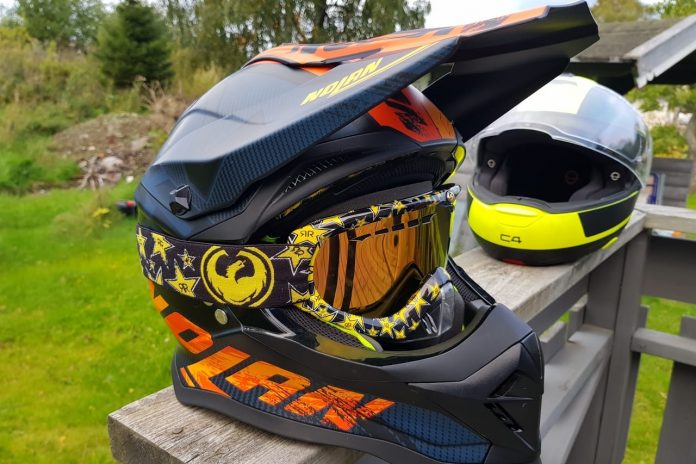When choosing a helmet for ATV riding, getting lost in the jungle of different helmets is easy. To narrow your options, choose between an ATV /motocross-style helmet or a motorcycle-style one.
To make this decision, you must know what separates the two helmet styles. Most importantly, what are the practical differences in use?
At first glance, both will do the job just as well. A helmet is a helmet, right? Well, there are some key differences you should know about so you don’t get a helmet that doesn’t suit your needs. In some critical areas, ATV riding differs a lot from motorcycle riding.
As soon as you’ve learned the difference between the two and what features separate them, choosing a helmet that fits your riding style should become much more manageable.
- Helmets marketed as ATV helmets are typically very similar to ordinary motocross helmets. These feature excellent ventilation, a strong chin guard, and a large face opening for off-road goggles. They are great for more aggressive off-road ATV riding.
- On the other hand, motorcycle helmets feature a full-face visor and excellent aerodynamics and are generally more quiet and comfortable. This style of helmet is suitable for casual trail riding and highway use.
In essence, motorcycle helmets are primarily designed for on-road use with aerodynamics and high-speed collisions in mind, while ATV helmets are typically built with a wider field of vision and designed for off-road use, usually including features such as sun peaks and extra ventilation.
Let us examine their differences further.
Related: What Is an ATV Helmet? Which Type Is Best?
Chin and Jaw Guard
ATV and MX helmets generally feature a very rigid structure in the chin guard, protecting the chin and jaw from injury. This will be useful when you plant your face on the handlebars after a jump or land face-first in the dirt after being thrown off the bike.
Although this may sound brutal, the time will come when you appreciate the protection this guard gives you. This is especially true if you are into some more aggressive style ATV.
Motorcycle helmets also have a chin guard; however, it’s not as beefy as the one on ATV helmets.
The distinctive massive ventilation you’ll find in the chin guard on ATV helmets also separates the two. More on that later.
Mud and Dust Protection: Full-Face Visor vs. Goggles
When you are into more aggressive ATV riding, where dirt and dust constantly fly everywhere, you face many of the same challenges as motocross riders.
In riding scenarios like this, a flip-up style full-face shield you find on motorcycle helmets is no good.
It will quickly become impossible to see through it because of dust getting both on the outside and inside the shield. Nothing prevents the dust from getting inside the helmet from underneath.
On the other hand, on ATV /MX helmets, you have a large opening to accommodate riding goggles, which works much better in dusty conditions than a full-face street helmet.
The goggles are designed to give a tight fit to your face, making it much less likely that dust will get into your eyes.

It’s worth noting that the opening on most motorcycle helmets will not allow for using goggles.
Ventilation
Superior ventilation is probably the main advantage of ATV /MX helmets over full-face motorcycle helmets.
Go for some challenging off-road riding or a few laps around the racing track on a hot summer’s day. In short, any form of riding where you actively use your body to maneuver the vehicle.
Trust me; you will need all the ventilation you can get to keep the sweat out of your eyes and your sight from fogging up.
ATV /MX helmets have massive vents all over, including one in the chin guard, to allow as much cool air as possible to enter.

Motorcycle helmets are vented as well but do not have the capacity to scoop in sufficient amounts of air to keep cool.
They also have the disadvantage of breathing directly onto the inside of the visor, fogging them up when you get hot.
To keep the visor fog-free when riding actively, keep it open halfway to let in enough air. This, however, beats the purpose of having a screen to protect your eyes from dirt.
As for where on ATV /MX helmets, the goggles’ area is well-ventilated, and the goggles are also vented. This helps a lot to prevent them from fogging up.
Aerodynamics
The motorcycle helmet is designed to handle high speeds up to 200mph or higher. At speeds like this, the helmet’s aerodynamics is crucial to keep your head stable without straining your neck muscles.
The surface needs to be as smooth as possible, and this is where the full-face visor comes to shine.

The peak and the large face opening make the aerodynamics on ATV /MX-style helmets pretty bad and make riding over 70mph quite challenging.
But for most ATVs, however, this is rarely the case. At speeds under 60-70mph, the helmet’s aerodynamics is less critical, and the ATV /MX helmet works very well.
Noise Protection
Motorcycle helmets are often made with comfort in mind. Especially at higher speeds, wind noise can be pretty noticeable on an ATV /MX helmet.
On the other hand, the aerodynamic and fully enclosed design of the motorcycle helmet will, in most cases, do a much better job of keeping things quiet.
Many dirtbike riders and ATV racers prefer to hear where their opponent is when they ride side by side. That’s why some ATV /MX helmets have vents on the sides to let the sound in. This feature is useless if you use the helmet on the highway at high speed, as the wind noise will be unbearable.
Sun Protection
Some motorcycle helmets have a flip-down style tinted visor for keeping the sun out of your eyes.

On the other hand, ATV /MX helmets do not have this feature but rather a slightly adjustable beak to give your eyes shade.
Design and Looks
The distinctive chin guard and sun visor are design elements that will quickly tell that you’re dealing with an ATV /MX helmet. The full face shield and smooth aerodynamic design will be key design features to look for on motorcycle helmets.
And then you have the actual graphics and colors on the helmets. ATV /MX helmets are often (but not always) worn by younger riders.
A quick look at the vast range of available models will tell you that cool graphics are essential in this game. Standing out from the crowd is a must.
Some motorcycle helmets come with impressive designs also, but if you plan on using the helmet in traffic, you’re better off looking for high visibility alternative.
Motorcycles are small and can easily be overlooked by cars and trucks. Choosing a yellow, red, or white helmet should give the other driver a significantly higher chance of spotting you before it’s too late.
Impact Protection
Keep in mind that motorcycle helmets are designed with high-speed impacts in mind. ATV /MX helmets are generally not.
However, that’s not to say you won’t find ATV /MX helmets with just as good protection as motorcycle helmets.
In any case, you should always ensure your helmet is tested and approved for the highest safety standards.
Weight
Low helmet weight is essential for two reasons:
- If you ride all day, let’s say on a bumpy ATV track, the extra grams of a heavy helmet will feel like extra kilos at the end of the day. Any helmet over 1650 grams is no good for this purpose.
- If you end up in an accident, any extra weight will increase the risk of hurting your neck.
Generally, I would want a lighter helmet for ATV riding because of all the bumps and shaking off-road riding will give.
Protection From the Elements
When riding in the cold rain, or especially in the winter, a full face shield will do a much better job of keeping your face protected. Again, comfort is what it’s all about when going for long rides on the highway, so a motorcycle helmet would be your best choice.
The ATV /MX helmet can’t keep the water out of your face. Riding down the highway on a rainy day with a dirtbike helmet is nothing short of a nightmare.
Or, if you are out winter riding, you can get frostbite on your cheeks or nose faster than you can say “brrr” if you are not well protected. Keeping the cold from hitting your bare skin is essential.
Full-face shielded helmets do a much better job on this. For this purpose, you can install a double-paned visor in your motorcycle helmet to prevent fogging.
But you can also get special winterized ATV /snowmobile helmets that use goggles but have extra inserts to keep you warm. These are best when your winter riding is active and sweaty – the most demanding challenge a helmet must face.
You can also get special full-face shielded winter helmets with added insulation and a breathing tube or facemask to isolate the hot moist, exhaled air to prevent fogging or icing.
Cleanability
ATV racing and dirtbike riding involve a very active riding style with large body movements. Often you ride in the blistering heat, so sweat will occur, no matter what. Then there is the dust, dirt, and mud that get into every little corner of the helmet.
That’s why you won’t find an ATV /MX helmet today without an easily removable inner lining that can be washed when necessary.
You will find this feature on more and more motorcycle helmets as well. This is quite convenient for hygienic reasons.
But when out riding on the highway, you don’t run the same risk of potentially having to trash the helmet after soaking it in sweat and mud. That’s why easy cleaning is so vital on ATV /MX helmets.
Which Helmet Style for Various Types of ATV Riding?
So now you know what separates the two types of helmets. To summarize, I’ll discuss what helmet fits best for different ATV riding situations.
Sport, Off-Road, Dune Riding, and Mudding
The ATV /MX-style helmet is what you want for any off-road application. Good ventilation, good protection, and the ability to use goggles are vital features to look for.
This is the type to get if you only want one helmet for all your ATV ridings.
Recreational Trail Riding
When comfort is more important than dirt-handling abilities, you may want to choose a motorcycle-style helmet.
This gives you better protection against the elements, reduces sound, and you should have no issues with overheating as long as you stay on the trail.
Utility Work and Hunting
I prefer using an ATV /MX helmet for this type of riding, but I usually skip the goggles. This gives you excellent protection but also lots of ventilation and good visibility.
I recommend this over using a so-called “open-face helmet” with no chin guard.
While these are still better than nothing, they lack essential facial protection from branches, flying debris, or sudden stops, face first. In my opinion, these belong only to old motorcycle movies.
Related: Are ATV Helmets DOT Approved? Are They Road Legal?
The Bottom Line
While both ATV and motorcycle helmets offer the necessary protection, the key distinction lies in their specific designs: ATV helmets prioritize a wider field of vision, breathability, and sun protection for off-road use, whereas motorcycle helmets are aerodynamically optimized for on-road, high-speed safety.
Related: Do ATV and Motocross Helmets Expire? How Long Do They Last?

